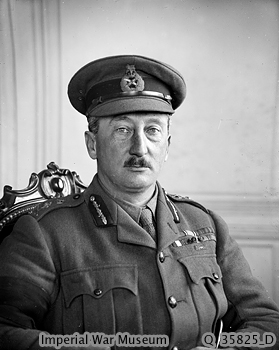Entries from September 2009 ↓
September 9th, 2009 — copywriting, copywriting tips, freelance copywriting

I recently wrote a case study about a powerchair manufacture, Dragonmobility, for one of my clients. But this isn’t any ordinary company.
During my telephone interview with the Managing Director, Dan Everad, I was completely enthralled by his story. Most of us go through school and possibly university and then opt for whichever career we like the look of at the time. But for Dan, his vocation chose him. His daughter was diagnosed with an incurable neuro-muscular disorder at the age of 17 months. Dan was determined to give her the life of high mobility she deserved so she could play, develop and blossom into an independent young woman. So he invented the first commercially available elevating powerchair.
By using his chair young mothers can play on the floor with their children one minute and then elevate themselves to eye level to hold a conversation with friends the next.
To Dan, every customer is unique and as such every powerchair that is produced is tailored to their needs. He is currently developing one for a disabled and blind client that uses sonar technology to navigate a room (as a bat would).
You may be wondering what all this has to do with copywriting – well, quite a lot.
As a freelance copywriter I work with numerous clients covering a broad range of industries. If I adopted the same approach for every project I worked on I would soon be out of business.
The 2 most important questions I need to ask myself are:
What does my client want to achieve?
Who is my audience and why do they need this product?
OK, technically speaking that’s 3 questions (and, yes, before you bombard me with emails, there are many other questions I would also need to ask), but they are vital to understand how I should tailor my writing.
In the same way as Dan looks at each customer individually to ensure his product does what they need, I have to look at my target audience to asses how best to put my clients’ message across.
A copywirter also needs to be a good listener – let your client talk you through a brief, listen to everything they say (and what they don’t say). Ask questions – the more information you can get the better. Fully armed you can then write laser guided copy that will penetrate your readers’ defences.
September 8th, 2009 — copywriting, copywriting services, email copywriting

Email is a quick and easy way to get your message out to thousands of people in one hit.
So what do you need?
Well a copywriter is always a good start, but well written sales copy will only get you so far. Many people make the mistake of thinking that if they get a copywriter on board their email marketing campaign will be a sure success.
But come on, this is the murky world of marketing – nothing is that simple. For a campaign to have the highest possible chance of success (there are no guarantees here) there are several factors that need to be taken into consideration.
Yes, this is a biggy but it’s not the be all and end all by any means. Your copy needs to be strong, compelling and sales orientated (hence the need for a freelance copywriter) with a strong headline and call to action, but it also has to have a ‘human side’. No one likes to think they are being sold something. The content has to be interesting, personable and engaging to give it the best possible chance of getting your message across.
Possibly even more important than the writing (did I really say that?) is the offer you are making. If it’s not irresistible it won’t work. And don’t forget it’s your readers that have to find the offer amazing – your opinion doesn’t count. Let’s face it we all think our products and services are the best, but that obviously can’t be true. It doesn’t matter how great you think your offer is, if your reader doesn’t get excited about it your email will end up in the deleted folder.
You can send out the best offer ever written by the world’s top copywriter, but if you are sending it to a ‘bad’ list it won’t work. You have to carefully research your target market to make sure your message is reaching the correct audience.
If you are sending an HTML email, have you tested it? Now I’m not an expert in HTML but I do know that not all browsers/email clients view it in the same way. What might look like a stunning email to one recipient may look like a pile of garbage to another. Test your email to make sure it works otherwise your hard work could either end up in a spam filter or deleted file.
Timing is everything. Avoid sending out your mailing on a Monday or Friday. The best time to send is mid morning on a Tuesday or Thursday. Also don’t forget that your recipient has a life too. The reason why your email failed to get their attention may be due to factors beyond your control – too busy, having a bad day, going to the wrong person or simply that you’ve contacted a company at a time when they don’t want or need your product.
I’m sure you can think of many more reasons why an email campaign may not work. But I want to get across the fact that you can’t blame one aspect for failure as there may be multiple reasons.
When embarking on a campaign it should be exactly that – a campaign. One email won’t do it. To be highly effective you need to send a series of emails over a time period. Use them to give information as well as sell. By constantly appearing in your reader’s inbox over a period of time increases your chances of being called when they need your particular product or service.
People will only buy if they need your service. It doesn’t matter how attractive your offer is, if they don’t have a need, they won’t buy.
September 3rd, 2009 — copywriting, freelance copywriting, sales writing

The good old British reserve seems to be holding back many businesses from getting the exposure they deserve.
A large part of the work I do is website copywriting. When I am sat with my clients going through the copy they need on their website I am often amazed at their lack of ‘shoutiness’ about their company’s achievements. Normally there is the obligatory page of testimonials which often are just a list of waffly quotes. Rarely do you find testimonials of substance.
Readers don’t want to see that you were ‘nice to work with’ they want to know how your product/service helped – what was the ROI?
Likewise with the ‘News’ pages that companies like so much. The problem is that what is on them is hardly ever news. Here you should list things like:
- Awards given
- Donations to chairty that you have made
- Large contracts you have won
- Success stories
And don’t forget to press release it too! It’s all well and good posting the information on your website but unless you get it out there in a press release who’s going to see it? If you have a blog, blog about it and link it back to your website – this generates those all important back links.
As Jon Morrow states in his recent post The Susan Boyle Guide to Being Loud and Proud, “The true giants of this world aren’t quiet. They are as loud as they are tall.”
So next time your company does something well SHOUT ABOUT IT.
September 2nd, 2009 — copywriting, copywriting tips, freelance copywriting
Whether you are a copywriter, business writer, sales professional or the guy that just happened to get lumbered with the sales writing tasks, you need to make sure you always deliver the strongest material possible.
Creating strong, compelling sales copy isn’t always easy – especially when you have to write about the most boring subject known to man. But whether you enjoy the subject matter or not, you are duty bound to produce something that is interesting, persausive and strong – something that will sell.
Our guest blogger, Jamie Hudson, has put together his list of 11 ways to make sure you deliver excellent creative work every time.
Whether you’re doing creative work, overseeing it or judging work that’s been presented to you, these tips will help you decide if it’s as good as it could be.
- What’s the budget?
It’s no use coming up with mega-budget ideas if there isn’t a mega-budget. And no, it’s not usually worth presenting the ideas to the client in the hope that they’re so impressed they find an extra £50K to spend. Come up with something creative within the budget. Sure, it’s a tighter brief but, as the saying goes, give me the freedom of tight briefs.
- What is the objective?
Gather names? Provide qualified leads? Build sales? Get approval orders? Gather information? Obviously, different objectives need different solutions. But you’d be surprised (or perhaps you wouldn’t) how often creatives launch into flights of fancy without first thinking to themselves, ‘What are we actually trying to achieve here?’
- When is it wanted?
In other words, never, ever miss a deadline. If it’s too short, ask for more time. But not too much. Having twice the amount of time doesn’t usually make the ideas twice as good. Ideally, you need not quite enough time to do the job – it gets the adrenaline going.
- Who are your prospects?
Think about the person who’s going to be reading your sales copy. What do they like or dislike? What are their hopes or fears? What do they need? What will make their life easier? What motivates them? Get a picture in your head of just one person and sell to that person.
- What’s the benefit?
This is what is your reader most interested in so get it right upfront. Is it better, cheaper, faster, bigger, smaller, newer, more advanced than the competition? Has it got unique benefits no other product or service can offer – a Unique Selling Proposition (USP)? Then say it and show it in the most dramatic, eyectaching and innovative way you can.
- What’s the offer?
Next to the benefit, this is the most important part of the communication. What are you giving the prospect? A free gift? Money off? A free trial? Free membership? The first chance to buy? A special bonus? Highlight the offer. It’s what’s going to make people act now!
- Have you thought of everything?
In other words, have you worked up every single idea – good and bad? If you have the germ of an idea, but don’t know if it’s any good or just rubbish, work it up and then forget it and move on to the next idea. Don’t labour over it. You need to get the bad ideas out of your head to let the good ones come through. The same with copy. If you’re faced with a blank screen, just start typing. In the middle, at the end, anywhere and you’ll soon get into a flow. Then cut it down to the right length. It’s always easier to make long copy short than the opposite.
- Are you being precise?
Give exact details of savings, specifications and benefits. If you save £49.99, say it. Not £50. If it has ten features, explain them all and the benefits each one brings. If it’s new and improved, say why. If it has a great spec, pick out each term and say what it means.
- Is your copy easy to read?
Does it have short words, short sentences of no more than 16 words and short paragraphs? Does it flow well? Can you read through to the end without stumbling on any phrases or having to stop and try to work out the meaning? Carrying words always help. Try using words and phrases like, And, Moreover, Indeed, What’s more, This is why, In fact, In addition, and so on.
- Do people understand?
Never assume that what is obvious to you is obvious to everyone. That’s why you should show your work to people not connected with the job. They might spot something you’ve missed. And even though it’s your precious baby and it’s going to win you awards, be prepared to change it, if the opinions are valid. Not just, ‘I don’t like that colour’.
- Have you answered the brief?
Throughout the whole process you must always refer back to the brief. At the start, when you’re trying to get a handle on the job – the product, the benefits, the offer, the target market, and most important of all, the objectives. When you’re halfway through the job, or perhaps gone off in the wrong direction, check the brief. And when you’ve finished, check again, and if you’ve answered the brief, go and tell the suits to sell it hard. Better still, go to the client and sell it hard yourself.
September 1st, 2009 — copywriting, copywriting tips, freelance copywriting
Giving away free stuff may sound an odd way to make money but it works.
I don’t mean you have to give away products or services, but rather information and knowledge.
Take this blog for example. I am a freelance copywriter and I use this blog to provide you, my readers, with information about copywriting and marketing. I hope these blog posts give you plenty of ideas and tips about how you can improve your sales writing and marketing activites to make your on (and off line) businesses more profitable.
By providing you with knowledge and expertise I show my own knowledge level whilst empowering you.
This practice can be tied into the six psychological shortcuts of influence which will help you convert more sales. Reciprocity is a key factor in triggering a psychological need to give something back – i.e. you give me something for free therefore I feel that I must buy from you.
The mechanics of this and other powerful triggers are explained in this excellent post Educate to Dominate Your Competition by Copyblogger. Have a read and it will show you jusy how powerful this conept can be.








